I have been thinking a lot about the evolution of food, what was before we have now and what will come. As the world gets exponentially connected, trends, culture and society continue to change and meld, borrowing from one place and making something new. For a while, I have been continuously searching for the roots of my cultural food, the foundation of our foods before colonialism and globalization. These thoughts and questions are in parallel to my own personal journey to understanding who I am, my values, my identity, with a lot of it intertwined and understood through food, my upbringing and my culture. My trip to Northern Ghana allowed me to peak into the past of Ghanaian culinary traditions but it also had me rethinking the constant desire I had to always look behind me.
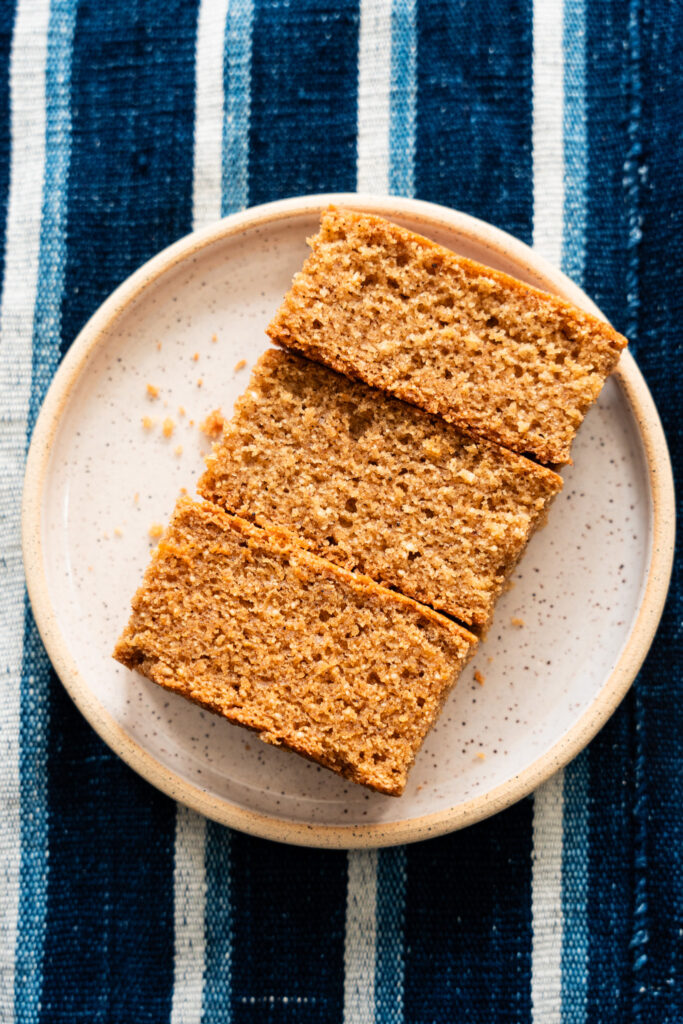
Before….
A lot of my thoughts about the evolution of food are sometimes wrapped up in my sadness about the lack of indigenous written records of these foods. Many West African cultures do not have indigenous forms of writing. Our stories, values and histories are either carried through symbols (like adinkra) or oral stories and proverbs that morph reality, folklore and spiritual practice. These forms of storytelling are beautiful and a unique part of many cultures, (unfortunately slowly being lost to modernity), but sometimes, the absence of written records dating centuries, leaves so much empty space to imagine what was. A lot of what we have as historical narratives are either by Ghanaians educated in a Western country with interest in writing down our langauge and histories or the collection of journals from European explorers. This empty space is further compounded by the destruction of records by colonial conquests that destroyed what we had available to us. Imagine what we would have known about Asante daily life and history had the British not burnt down the Manhyia palace, known to have housed an extensive amount of art, artifacts, arabic text and details about the Asante kingdom.
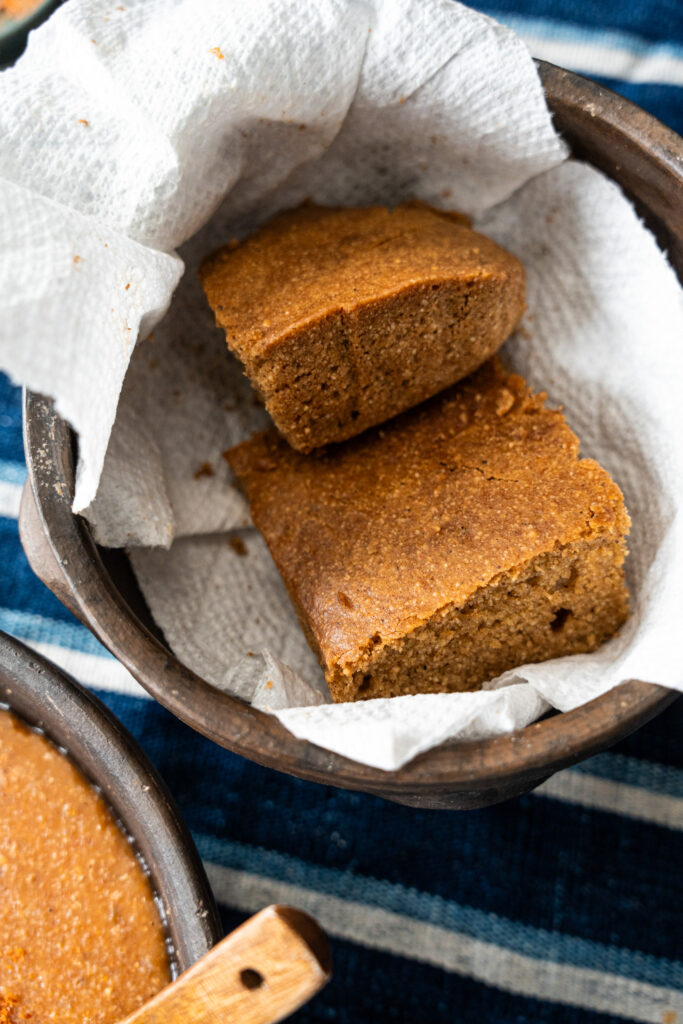
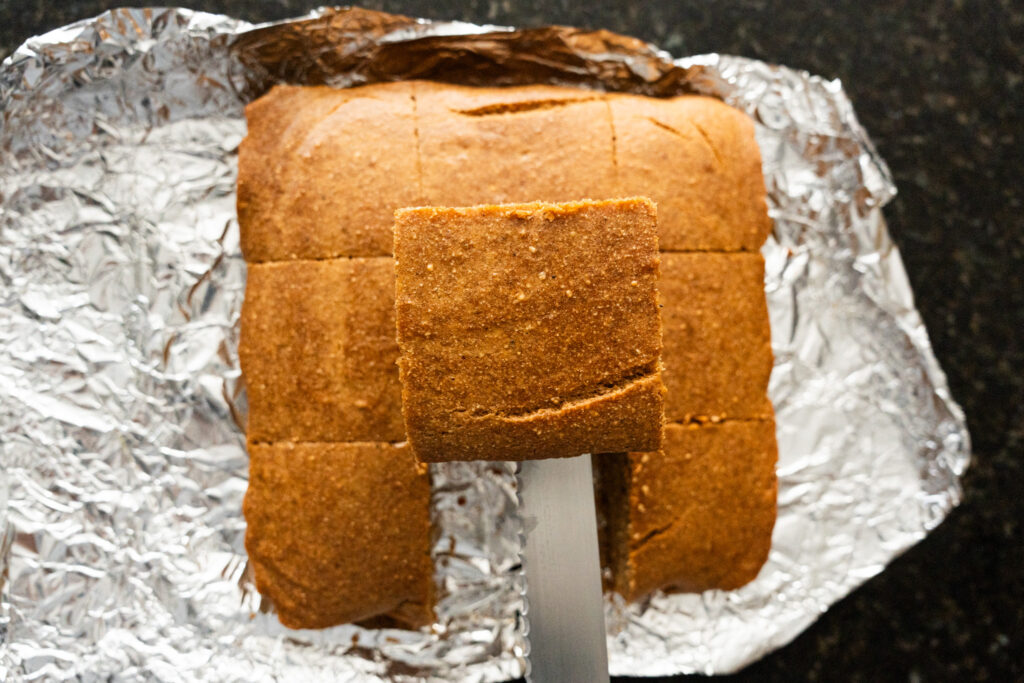
What we have left are little clues through the foods of our rural and northern communities, some archeological evidence and plant taxonomy. Thinking about these consistently can cause a lot of what ifs. Just like how I keep pondering over what ifs in my life, what if I didn’t move to Canada, what if my family stayed in Ghana, I also wonder what if our foods remained relatively unchanged without the pressure of free trade and colonial impacts. But dwelling in this what ifs is not the way to move forward.
After…
I think I found myself stuck in that cycle of trying to decipher and not realizing the beauty in food evolution. This all started after listening to a podcast about the history of Korean tteobokki, which over centuries has been morphed and shaped by Korean history and culture. The chef talked so beautifully about preserving traditional tteobokki flavours but also the opportunity to be creative given the history of tteobokki. For a long time, I was chasing what was the history of what our ancestors were eating, but now I do not think that question has a black-and-white answer. Fusion is not a new concept, but evolving food doesn’t necessarily mean a lack of appreciation for the past. My trip to Ghana forced me to relegate the specific rules I had around experiencing food and thinking about food history as a lot of things have changed and continue to change. Just like how I cannot continue to dwell on the what ifs in my life. With the rise of the digital age, what we couldn’t document centuries ago concerning our food can now be documented for generations to come.
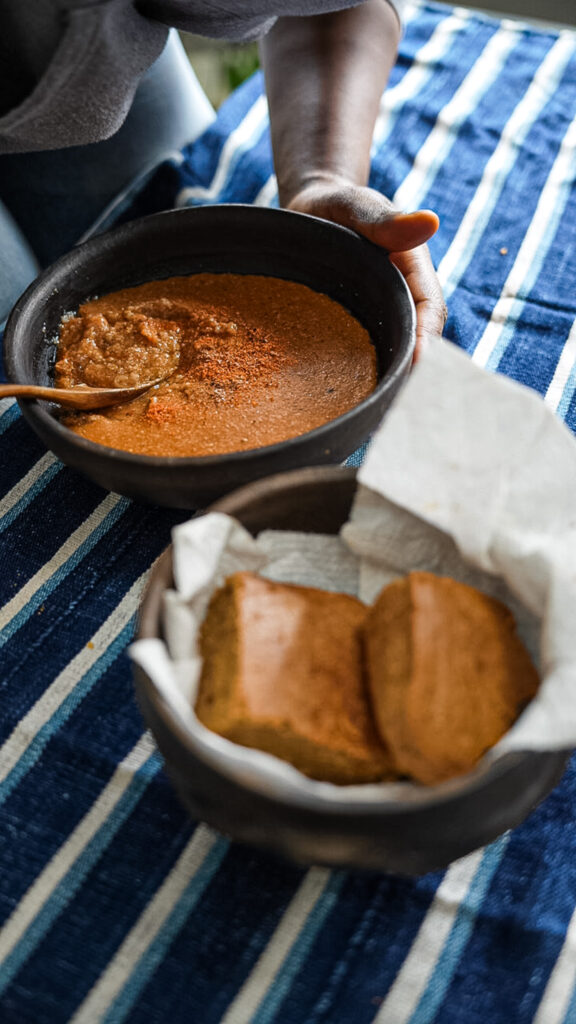
Guinea Corn Bread Inspiration
For this recipe, I took the staple of Ghanaian food in the past — sorghum, roasted it and replaced it for corn in cornbread. I had to control myself from not eating a lot of the batter. Sorghum has been said to be part of traditional African diets for millenia and is now commonly replaced by corn after its introduction in the 16th/17th centuries. Roasted grain flours are a popular addition to many Ghanaian recipes like tom brown to apapransa and ayikple, which add an incredible flavour. Combining two concepts — a play on words and a popular cooking tradition, we have guinea corn bread.
Guinea Corn Bread
Ingredients
Roasted Sorghum Flour
- 2 cups Sorghum/Guinea Corn
Guinea Corn Batter
- 1 1/3 cup soy milk
- 2/3 cup yogurt 80g
- 1/4 cup apple sauce 50g
- 2/3 cup of oil
- 2/3 cup of sugar 140g
- 1 tbsp baking powder
- 1 tsp baking soda
- 1 1/2 cup of sorghum flour 210g
- 1 1/2 cup of all purpose flour 180g 1.5cups
- 1/2 tsp salt
Instructions
Roasting Sorghum
- Spread the sorghum on a baking tray and bake at 370°F for 10-15 mins or until dark brown.
- Let the sorghum cool down completely then blend in a high speed blender till you get a powder
- Store in an airtight container
The Cornbread
- Preheat the oven to 350°F
- Measure out all the dry ingredients
- Add in all the wet ingredients
- Mix well
- Place in a cast iron or square loaf pan
- Bake at 350°F for 40 mins or till a toothpick comes out clean

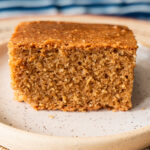
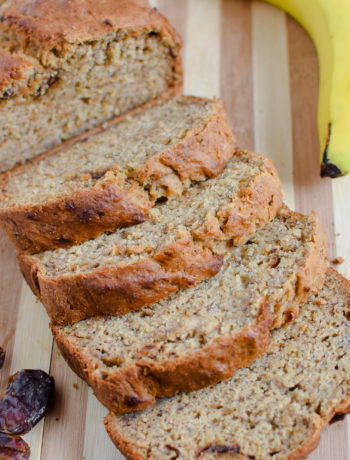
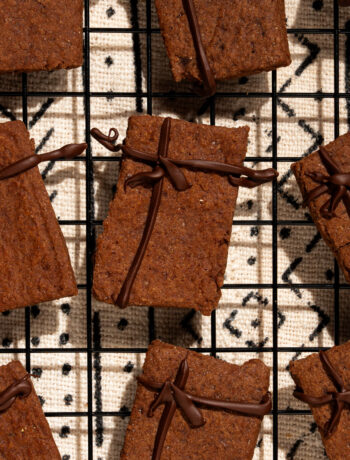
No Comments